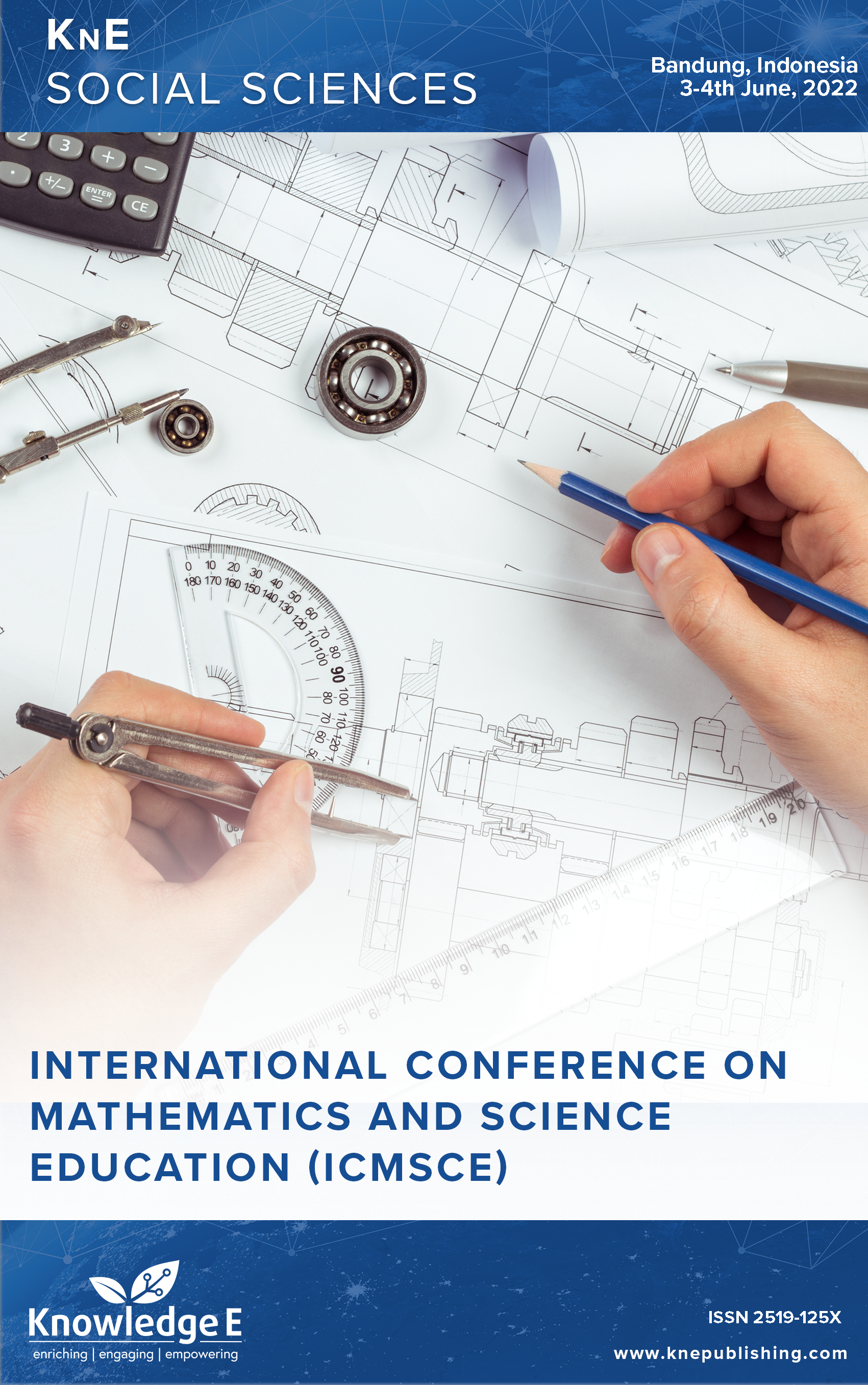Students' Adaptive Reasoning in Solving Pythagoras Theorem Problems Viewed by Gender
DOI:
https://doi.org/10.18502/kss.v9i13.15970Abstract
Adaptive reasoning is one of the mathematical proficiency strands that refers to the capacity to reflect, explain, justify, and think logically about concepts and situations. It helps student construct their idea in solving mathematics problems. On the other hand, students’ adaptive reasoning still needs to be developed. This is a qualitative study with a case study design. This study was carried out to analyze students’ adaptive reasoning in solving Pythagoras Theorem problems based on gender. There were 31 student participants, of which 14 were males and 17 females. They were the second grade of senior high schools in South of Aceh. There were several steps involved in conducting this study, such as formulating and validating the problems, conducting the test, and interviewing. The problems were formulated based on the adaptive reasoning indicators and curriculum. They were then validated by two lecturers and a teacher. Furthermore, the test was carried out for 20 minutes for answering 4 problems. This study showed that female students were able to solve adaptive reasoning problems as compared to male students.
Keywords: adaptive reasoning, gender, solving Pythagoras theorem problems
References
Kilpatrick J, Swafford J, Findell B. The strands of mathematical proficiency. Washington (DC): NATIONAL ACADEMY PRESS; 2001. p. 20418.
Khusna AH, Yuwono I, Muksar M. “Pengembangan lembar kerja siswa (lks) berkarakteristik rme materi barisan dan deret untuk kelas x.,” Jurnal Pendidikan: Teori, Penelitian, dan Pengembangan. vol. 1, no. 4, pp. 739–745, 2016.
Literacy A, Lesgold AM, Welch-ross M. ”Improving adult literacy instruction options for practice and research”. 2012.
Gusic M. “Investigating adaptive reasoning and strategic competence in Croatian mathematics education: the example of quadratic function.,” Towards new perspectives on mathematics education. p. 192, 2019.
Ansari BI, Taufiq T, Saminan S. The use of creative problem solving model to develop students ’ adaptive reasoning ability: Inductive, deductive, and intuitive. International Journal on Teaching and Learning Mathematics. 2020;3(1):23–36. DOI: https://doi.org/10.18860/ijtlm.v3i1.9439
Mulyayunita A. “Analysis of students ’ adaptive reasoning in solving quadrilateral problem viewed by van hiele's thinking level,” pp. 323–328, 2019.
Recber S, Isiksal M, Koç Y. Investigating self-efficacy, anxiety, attitudes and mathematics achievement regarding gender and school type. Volume 34. Anales de Psicología/Annals of Psychology; 2018. pp. 41–51. DOI: https://doi.org/10.6018/analesps.34.1.229571
Wijaya A, van den Heuvel-Panhuizen M, Doorman M, Robitzsch A. Difficulties in solving context-based PISA mathematics tasks: an analysis of students’ errors. Mont Math Enthus. 2014;11(3):555–84. DOI: https://doi.org/10.54870/1551-3440.1317
Fitri KA, Jupri A. “Students’ errors in solving the connection cluster problem: a case study on space and shape content,” In: Journal of Physics: Conference Series. pp. 12079. IOP Publishing (2021). https://doi.org/10.1088/1742-6596/1806/1/012079. DOI: https://doi.org/10.1088/1742-6596/1806/1/012079
Riastuti N, Mardiyana M, Pramudya I. “Students errors in geometry viewed from spatial intelligence.” Journal of Physics: Conference Series. vol. 895, no. 1, p. 2017. https://doi.org/10.1088/1742-6596/895/1/012029. DOI: https://doi.org/10.1088/1742-6596/895/1/012029
Lithner J. A research framework for creative and imitative reasoning. Educ Stud Math. 2008;67(3):255–76. DOI: https://doi.org/10.1007/s10649-007-9104-2
Lithner J. Students’ mathematical reasoning in university textbook exercises. Educ Stud Math. 2003;52(1):29–55. DOI: https://doi.org/10.1023/A:1023683716659
Prabawanto S. “Students’ validations on their solution in mathematical problem solving,.” Journal of Physics: Conference Series. vol. 1157, no. 4, p. 2019. https://doi.org/10.1088/1742-6596/1157/4/042111. DOI: https://doi.org/10.1088/1742-6596/1157/4/042111
Herman T. Analysis of students’ mathematical reasoning. Journal of Physics: Conference Series. IOP Publishing; 2018.

